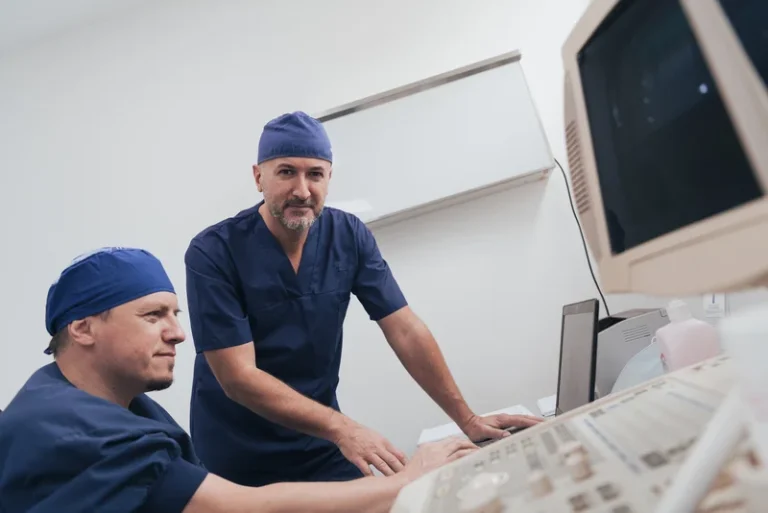
Clearly, the amount of error in measuring ethnicity is likely to be much less than the error in measuring complex behavior over long periods of time. In other studies (e.g., Schoenbaum et al., 1986), racial and ethnic differences may be due to the recruitment of subjects from different areas within a single city, thus reflecting residential segregation and perhaps multiple epidemics of HIV within one city. Even if a respondent is motivated to be truthful with a researcher, however, it is possible that the stigmatization and illegal nature of drug injection will bias his or her memory of drug injection behavior (Maddux and Desmond, 1975; Bale et al., 1981).
- Help from your health care provider, family, friends, support groups or an organized treatment program can help you overcome your drug addiction and stay drug-free.
- Once you’ve been addicted to a drug, you’re at high risk of falling back into a pattern of addiction.
- Approximately percent of these users (or 1,750-2,400) report current injection behavior (van den Hoek et al., 1988b).
Direct IV injections
- 12 Thus, using questionnaires that are self-administered, that have complex structures or wording, or that are available only in English can hardly serve a study of this population well.
- The committee recommends that high priority be given to studies of IV drug users who are not in contact with health care, drug-use treatment, or criminal justice systems.
- Therefore, timely recognition of typical imaging features and patterns is imperative.
- The common assumption that providing the means for safer injection will encourage drug use and undermine drug treatment is contradicted by the data collected to date.
- Even if they are not addicted, some users, out of a classical type of conditioning, will feel the urge to inject the drug immediately after purchasing it (Wikler, 1973; Des Jarlais et al., 1985).
As with other blood-borne infections to which IV drug users are prone, HIV spreads from the infected to the uninfected user primarily by the sharing of blood-contaminated injection equipment, which serves as the vector of the virus. Controlling the spread of the AIDS epidemic demands more knowledge about the size of the IV drug-using population and the dynamics of viral transmission in this group. Efforts to control the spread of other viral infections have not produced information on the dynamics of infection that would be helpful in preventing the spread of HIV. Data are still needed on the distribution and variation of behaviors that transmit HIV, the number of IV drug users, and the proportion of users infected with the virus.
Acute infections in intravenous drug users
According to the 2021 World Drug Report of the United Nations Office on Drugs and Crime (UNODC), 269 million people used an illicit drug in 2018. By the year 2030, this number is expected to increase to 299 million people – an 11% increase. Some patients readily admit to injection drug use, but for others, a thorough physical examination is needed to detect evidence of injection. Be sure to carefully clean the injection site prior to injecting (see ‘Mainlining’ section above for more detail). Because crack comes in a solid form (rock), it is necessary to dissolve it first.
Changes In Injection Behavior
Ultrasound is also a useful initial investigation in PWID presenting with soft tissue infection to evaluate for the presence of a subcutaneous abscess or non-radio-opaque foreign body, as well as guiding potential abscess aspiration or therapeutic drainage [8]. Ultrasound features of cellulitis include diffuse thickening and increased echogenicity of subcutaneous tissues and a characteristic “cobblestone” appearance of the subcutaneous fat due to soft tissue oedema [8, 9]. Non-infectious/inflammatory causes of soft tissue oedema such as cardiac failure must be considered as a differential diagnosis. Doppler ultrasound demonstrating diffusely increased flow indicative of hyperaemia (Fig. (Fig.1)1) helps differentiate cellulitis from non-infectious oedema, in addition to clinical history and examination [9]. Computed tomography (CT) in cellulitis demonstrates increased attenuation and stranding of the subcutaneous fat, due to oedema, with overlying skin thickening. IV lines are classified as “central lines” if they end in a large vein close to the heart, or as “peripheral lines” if their output is to a small vein in the periphery, such as the arm.

When do doctors give opioids by IV?
The majority of cases of mycotic aneurysms occur in PWID or after invasive endovascular or surgical procedures. Important differential causes to consider in patients presenting with a suspected mycotic aneurysm include diabetes mellitus and malignancy. Similar to secondarily infected pseudoaneurysms caused by direct vessel wall injury, these are also false aneurysms and iv drug use are unstable and prone to rupture. In addition to the risk of rupture, mycotic aneurysms may also lead to the development of arteriovenous fistulae or serve as a source of sepsis or septic emboli [31]. Plain radiographs may show indirect signs of cellulitis such as soft tissue swelling and loss of fascial planes and can identify radio-opaque retained foreign bodies.
- Intravenous drug use may present with abnormalities of any organ system, with musculoskeletal or vascular complications the most common, and may affect multiple parts of the body simultaneously.
- The history of drug use is often not forthcoming, such is its illicit nature, creating further diagnostic difficulty.
- In cellulitis, high T2 and STIR signal intensity with corresponding T1 signal intensity of the subcutaneous tissues with overlying skin thickening is seen, and there is enhancement following gadolinium administration [8].
- Substituted cathinones can be eaten, snorted, inhaled or injected and are highly addictive.
- Addiction symptoms are those that indicate a person may be addicted to a substance.

A central line, or a central venous catheter, accesses a more central vein within the torso, such as the vena cava. Healthcare professionals use X-rays to determine the ideal placement of the line. A peripheral line, or a peripheral venous catheter, is a common form of IV injection that is suitable for short-term treatment. If you’re living with or have lived with OUD or substance use disorder, talk with your healthcare team about this to the level of your comfort. Giving as much information as possible is always safest and best, but everyone has different comfort levels with this topic. A 2019 study of a cancer care center in Texas found that more than half of the nurses had administered IV opioids too quickly.

Surrounding soft tissue inflammatory change, including the “imaging psoas sign”, and clinical history indicating an increased risk of haematogenous infection, as in PWID, also suggest a diagnosis of discitis [21]. MRI is the imaging investigation of choice in osteomyelitis and other bone and joint infections. MRI protocols for suspected bone and joint complications of injected drug use should include a fluid-sensitive sequence such as STIR in addition to T2 or proton density and T1-weighted sequences in at least two planes. Bone marrow oedema is the earliest imaging finding identifiable in acute osteomyelitis and appears on MRI as high T2 and STIR signal intensity of the bone with corresponding low T1 signal (Figs. (Figs.1010 and and11)11) [17, 18]. High T2/STIR signal without low T1 signal is less specific and may represent reactive osteitis rather than osteomyelitis [17]. Cortical bone destruction can be identified as loss of the normal peripheral T1 hypointense cortical rim.
